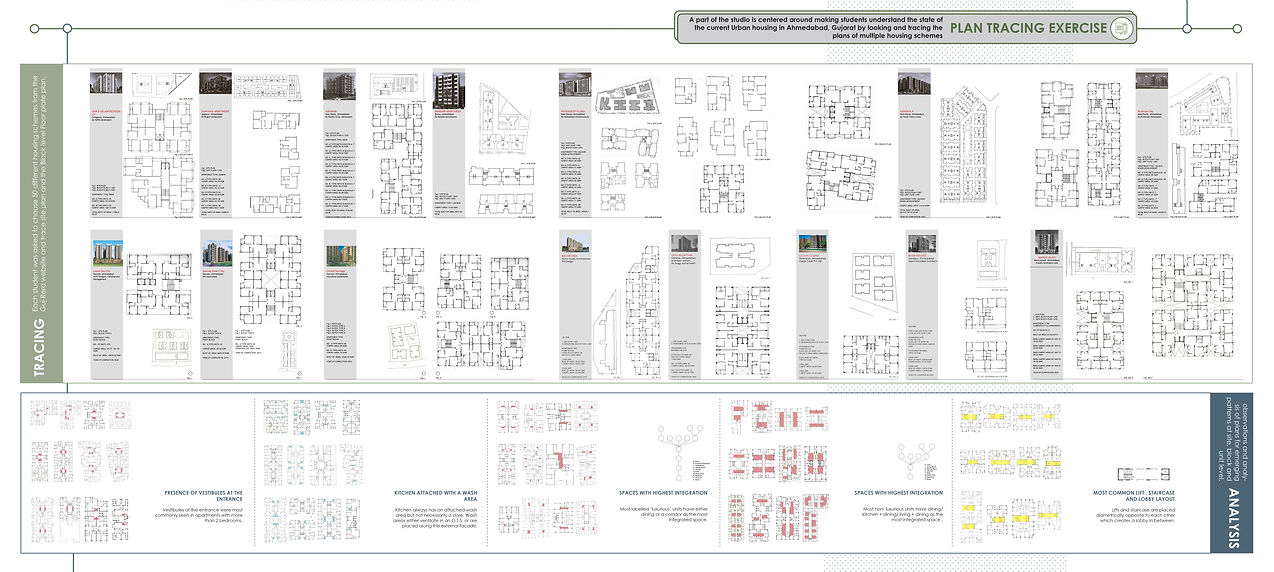
The Architect Strikes Back
Episode V of Oikopolis
Academia struggles with mainstream urban housing studios; either they end up being utopian and whimsical or abjectly surrender to economic and regulatory pressures. This studio situates itself between these two extremes and hopes to nudge mainstream housing design into creating meaningful spaces. The studio is structured in two parts- the first eleven weeks consist of a series of learning activities that prepare the student for the housing design project that last for five weeks. The first part consists of two sub-parts- a periodic litmus test in the form of 1 day design time problems where each time the students are expected to design an entire housing scheme on a new plot within 24 hours. This is done to encourage decisive thinking and action. The second sub part is intended to raise multiple debates regarding the state of urban housing in India today. This is done through a housing seminar in the 9th week where each student presents a paper on a topic of her choosing. Several book readings, and exercises drawing on the life of the everyday help in formulating this seminar topic. The Final Design Project is an opportunity to demonstrate the learnings of the entire semester in a comprehensive manner.

24 JULY, 2023
TIME PROBLEM 1
Given the rapid development of housing schemes in the vicinity, a developer is interested to buy a plot of land in Gota, Ahmedabadto build a residential housing scheme. Before buying the land, he wants to check how many units can be accommodated in the
given FSI to calculate his finances. He comes to you with just the plot boundary and asks you to draft a layout for him.

SELECTED BOOK READING & DISCUSSIONS


FINAL PROJECT
Having reviewed your past projects, the developer envisions a remarkable outcome from your end. Propose a housing scheme in the allocated plot, comprehensive of the three pillars of the studio: Meaning, Regulations and Profitability.
Students are allowed to make relevant and justified tweaks in one of the rules in the GDCR in order to address the other two pillars.


